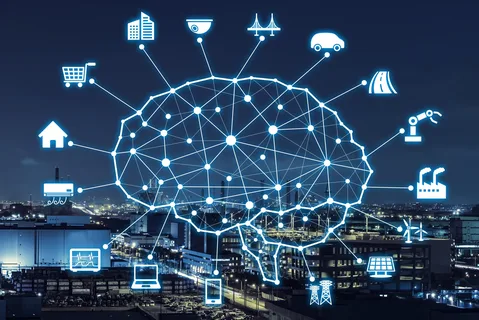A New Era of Equipment Reliability
The convergence of artificial intelligence (AI) and the Internet of Things (IoT) is redefining how industries monitor and maintain critical machinery. By integrating generative ai services into IoT ecosystems, businesses in manufacturing, oil & gas, and automotive sectors are improving operational efficiency through predictive maintenance, reducing costly downtime, and extending the lifespan of assets.
Predictive maintenance, enabled by AI-driven insights from IoT sensor data, allows organizations to shift from reactive to proactive maintenance models. This transformation not only minimizes unexpected equipment failures but also streamlines resource allocation and service scheduling.
The Mechanics of AI-Driven Predictive Maintenance
IoT devices deployed across industrial environments continuously gather real-time data—vibrations, temperature, pressure, acoustic signals, and more. Traditionally, this information was used for basic alerts or post-event analysis. Now, with the application of machine learning and generative ai solutions, this data becomes the foundation for forecasting future equipment failures before they occur.
Generative AI models can simulate potential fault scenarios and degradation patterns by learning from historical and real-time datasets. These models generate predictive maintenance schedules tailored to each machine’s behavior, usage intensity, and environment—eliminating the inefficiencies of fixed maintenance cycles.
According to Deloitte’s 2023 industrial AI report, companies implementing predictive maintenance with AI and IoT reduced unplanned downtime by up to 30% and maintenance costs by 20%.
Impact on the Manufacturing Sector
In manufacturing, unplanned equipment breakdowns can halt production lines, leading to delayed deliveries and lost revenue. Predictive maintenance is critical for machinery like CNC machines, robotic arms, and conveyors that form the backbone of production processes.
Generative AI identifies subtle shifts in equipment behavior that may precede a malfunction, allowing technicians to intervene before a failure disrupts operations. This intelligence ensures production uptime and quality consistency.
Global manufacturers like Siemens and GE are already leveraging AI-IoT combinations for smart factory initiatives. McKinsey estimates that predictive maintenance in manufacturing could generate $630 billion in annual savings by 2025.
Transforming Oil & Gas Operations
The oil and gas industry, with its remote and hazardous environments, benefits immensely from predictive maintenance. Offshore platforms, pipelines, and drilling equipment are equipped with thousands of sensors feeding into centralized monitoring systems.
By applying generative ai solutions, energy companies can predict and prevent critical failures in compressors, turbines, and pumps—equipment that is often expensive to repair and vital to operations.
Shell, for example, has implemented AI-powered predictive maintenance across its upstream operations, resulting in improved asset availability and reduced environmental risks. A 2024 report by Accenture revealed that predictive maintenance helped oil & gas firms cut operational downtime by up to 40% while enhancing worker safety.
Enhancing Automotive Uptime and Performance
The automotive industry is also embracing AI and IoT to shift from reactive repairs to predictive maintenance strategies. Automakers and fleet operators are embedding sensors into vehicles to capture real-time data on engine performance, brake wear, fluid levels, and more.
By integrating generative ai solutions, these systems analyze trends and suggest maintenance actions before issues escalate. This is particularly impactful for electric vehicle (EV) fleets, where battery health and system efficiency are paramount.
Tesla and BMW are already deploying predictive maintenance features through over-the-air updates and AI-driven diagnostics. These systems help reduce vehicle downtime, enhance the customer experience, and extend vehicle life cycles.
Real-Time Monitoring Meets AI Forecasting
Real-time monitoring is only half the equation. The true value emerges when this live data is analyzed through the lens of AI-powered forecasting. Generative models simulate various operational conditions, anticipate failures, and suggest optimized maintenance windows—often months in advance.
This intelligence enables industries to avoid emergency shutdowns and schedule maintenance during low-impact periods. Moreover, AI models can prioritize which equipment needs servicing first, reducing the load on maintenance teams and improving overall resource planning.
Gartner’s 2024 IoT analytics report highlighted that organizations combining real-time IoT analytics with AI saw a 60% increase in asset reliability and a 45% improvement in technician productivity.
Addressing Challenges and Data Integration
While the benefits are clear, implementing predictive maintenance powered by generative AI requires tackling several challenges—chief among them being data integration and model training. IoT environments produce vast amounts of heterogeneous data that must be cleaned, normalized, and contextualized.
Generative AI models require high-quality data to accurately learn patterns and simulate future outcomes. Successful deployments often involve tight collaboration between data engineers, domain experts, and AI specialists to align technical capabilities with business goals.
Furthermore, companies must ensure their data infrastructure can support edge analytics, secure data transmission, and cloud-based AI workloads.
Future Outlook: Scalable, Self-Learning Maintenance Systems
As generative AI continues to evolve, future predictive maintenance systems will become increasingly autonomous and scalable. These platforms will not only alert teams about potential failures but also generate repair instructions, recommend spare parts, and even schedule technicians—all without human intervention.
Over time, AI models will self-learn from previous interventions, adjusting their predictions based on outcomes, thereby becoming more accurate and operationally relevant.
Industries that invest in these capabilities will gain a competitive edge through reduced operational costs, improved asset utilization, and enhanced safety and compliance.


